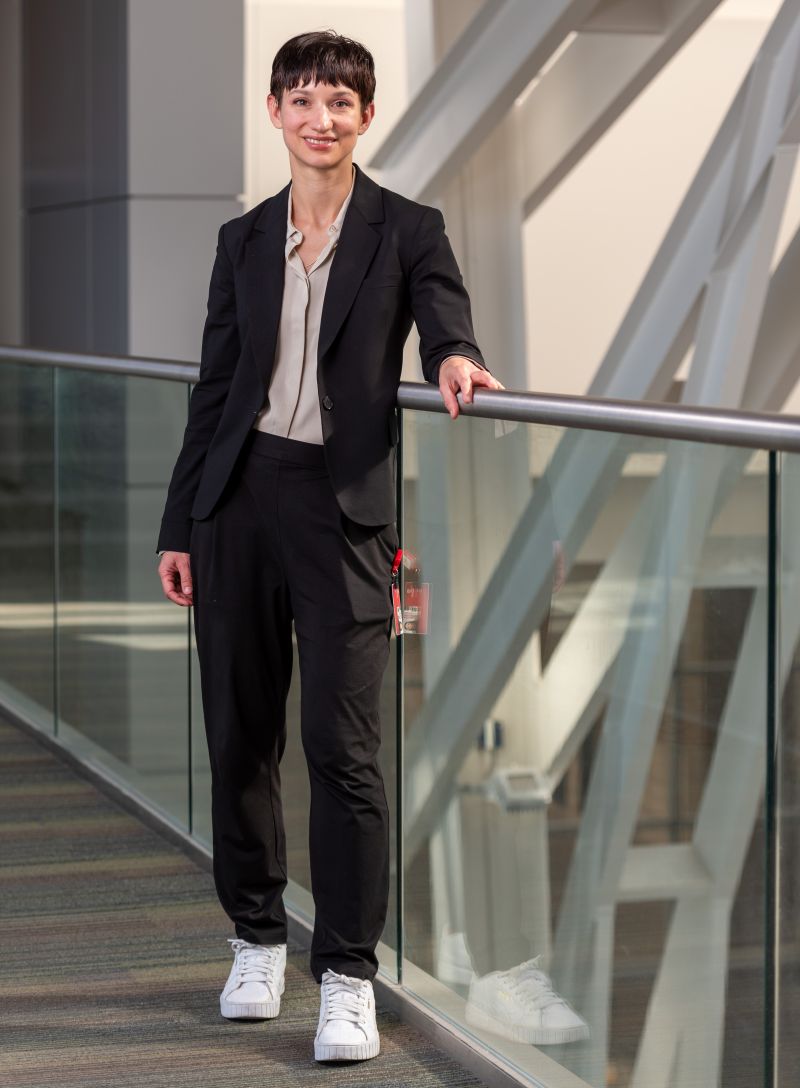Ana Nikolic – 2025 Elevation Grant Recipient
 Assistant Professor Pathology and Laboratory Medicine, Biochemistry and Molecular Biology Charbonneau Cancer Institute, Hotchkiss Brain Institute Cumming School of Medicine, University of Calgary
Assistant Professor Pathology and Laboratory Medicine, Biochemistry and Molecular Biology Charbonneau Cancer Institute, Hotchkiss Brain Institute Cumming School of Medicine, University of Calgary
Generously funded by DUNN with Cancer
Project: “Charting the landscape of cellular quiescence in adult IDH-wildtype GBM”
Total awarded amount: $100,000
Description of Project:
A subset of tumour cells, called glioma stem cells, help glioblastoma (GBM) tumours grow back after treatment. Some of these cells can remain dormant and inactive for extended periods. We don’t have a strong understanding of what these dormant cells look like and what causes them to wake up. This is important because keeping these cells asleep may delay tumour recurrence. We will use sensors that light up sleeping GBM cells to follow these cells over time. This will help us understand how they behave and how they are controlled. We will also treat glioblastoma cells with different drugs to identify those that help keep the tumour cells asleep or wake them up, allowing them to be killed by chemotherapy.
What receiving this award means:
Over 20 years of research have taught us that not all GBM cells are created equal. Multiple lines of study support the notion that certain populations of cells in glioblastoma are more potent at initiating tumours and better at evading treatment. What remains controversial, however, is how these cells, often referred to as glioma stem cells, behave. Different types of studies provide us with varying answers regarding whether these glioma stem cells are more quiescent (i.e., proliferate rarely) or represent a rapidly growing cell population. This is an important question to answer, as most current treatments (chemotherapy, radiation) only target cells that are actively growing.
This study will help my team understand the phenotypes of different types of quiescent (non-cycling) and cycling cells in various patient-derived GBM cell models and identify new targets for this disease.
The first part of the study will provide new insights into the pattern of how and when different GBM tumour cells choose to grow or remain dormant, and how this relates to previously described cell states in a diverse set of glioblastoma tumours. This will help us identify whether different tumours grow at different rates and how these changes occur over time.
We will also characterize the epigenome of these cell populations, aiming to identify epigenomic switches that regulate this type of behaviour, a phenomenon that has never been examined in GBM previously.
The second part of our proposed study will connect this to therapy by testing a large panel of epigenetic drugs, many of which are already in early-stage clinical trials, on the dormancy of different GBM cells. This will help identify compounds that could potentially induce dormancy and slow tumour growth, making glioblastoma a manageable chronic disease. On the other hand, we could also identify compounds that lead to escape from dormancy, forcing cells to grow and making them more sensitive to conventional therapies.
These findings could serve as the foundation for additional in vivo therapeutic studies and may lead to the development of novel agents for glioblastoma treatment.